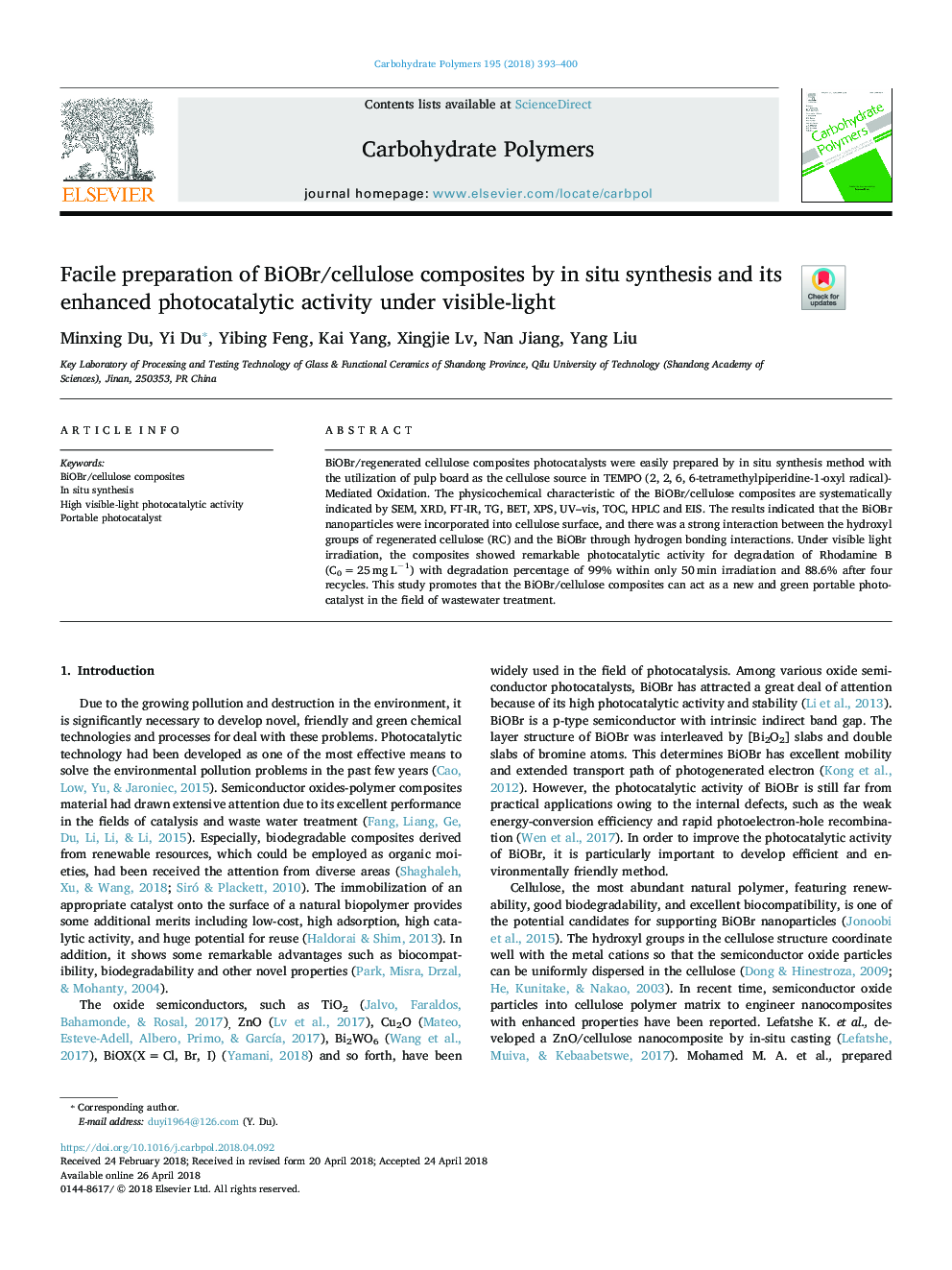| Article ID | Journal | Published Year | Pages | File Type |
|---|---|---|---|---|
| 7782267 | Carbohydrate Polymers | 2018 | 8 Pages |
Abstract
BiOBr/regenerated cellulose composites photocatalysts were easily prepared by in situ synthesis method with the utilization of pulp board as the cellulose source in TEMPO (2, 2, 6, 6-tetramethylpiperidine-1-oxyl radical)-Mediated Oxidation. The physicochemical characteristic of the BiOBr/cellulose composites are systematically indicated by SEM, XRD, FT-IR, TG, BET, XPS, UV-vis, TOC, HPLC and EIS. The results indicated that the BiOBr nanoparticles were incorporated into cellulose surface, and there was a strong interaction between the hydroxyl groups of regenerated cellulose (RC) and the BiOBr through hydrogen bonding interactions. Under visible light irradiation, the composites showed remarkable photocatalytic activity for degradation of Rhodamine B (C0â¯=â¯25â¯mgâ¯Lâ1) with degradation percentage of 99% within only 50â¯min irradiation and 88.6% after four recycles. This study promotes that the BiOBr/cellulose composites can act as a new and green portable photocatalyst in the field of wastewater treatment.
Keywords
Related Topics
Physical Sciences and Engineering
Chemistry
Organic Chemistry
Authors
Minxing Du, Yi Du, Yibing Feng, Kai Yang, Xingjie Lv, Nan Jiang, Yang Liu,
